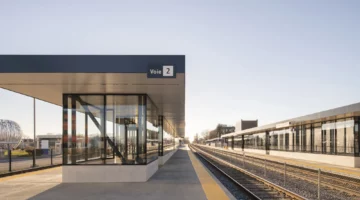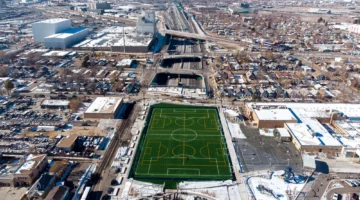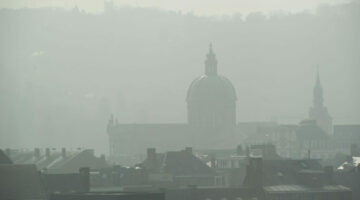The Chicago Architecture Biennial announced its fourth edition: The Available City. The 2021 Artistic Director is Chicago-based designer, researcher, and educator David Brown. The concept and title for the 2021 edition, The Available City, asks us to consider the impact collective space can have in cities today.
Through a reinvented and responsive global platform, the Biennial will create opportunities for conversations about the intersection of architecture and design and such critical issues as health, sustainability, equity, and racial justice leading up to and throughout the run of the edition. The fourth edition of the Biennial will open in September of 2021 featuring free, public programming at sites in neighborhoods across Chicago and on digital platforms.
"Since I became Mayor, I made it my mission to uplift our historically underserved communities with resources and programs that help them thrive. That is why I am especially thrilled that the 2021 Chicago Architecture Biennial will be focused and grounded in our neighborhoods that can benefit from it the most. I look forward to seeing how the Biennial enriches our entire City by amplifying and showcasing innovative ideas in design, community building and creative placemaking.” —Chicago Mayor Lori E. Lightfoot
A concept that was incubated during the inaugural Chicago Architecture Biennial in 2015, Brown’s long-term body of research forming the basis for The Available Citybegan with an inventory of vacant city-owned lots across Chicago—currently numbering more than 10,000 sites concentrated on the city’s South and West Sides. Over more than a decade of work, Brown developed this research into an ongoing urban design proposal that connects community residents, architects, and designers to work together to create spaces reflecting the needs of local neighborhoods. For the 2021 edition, Brown will explore the framework of The Available Cityon a global platform, engaging both local and international projects and practices that reflect new concepts for shared space and collective agency in the city.
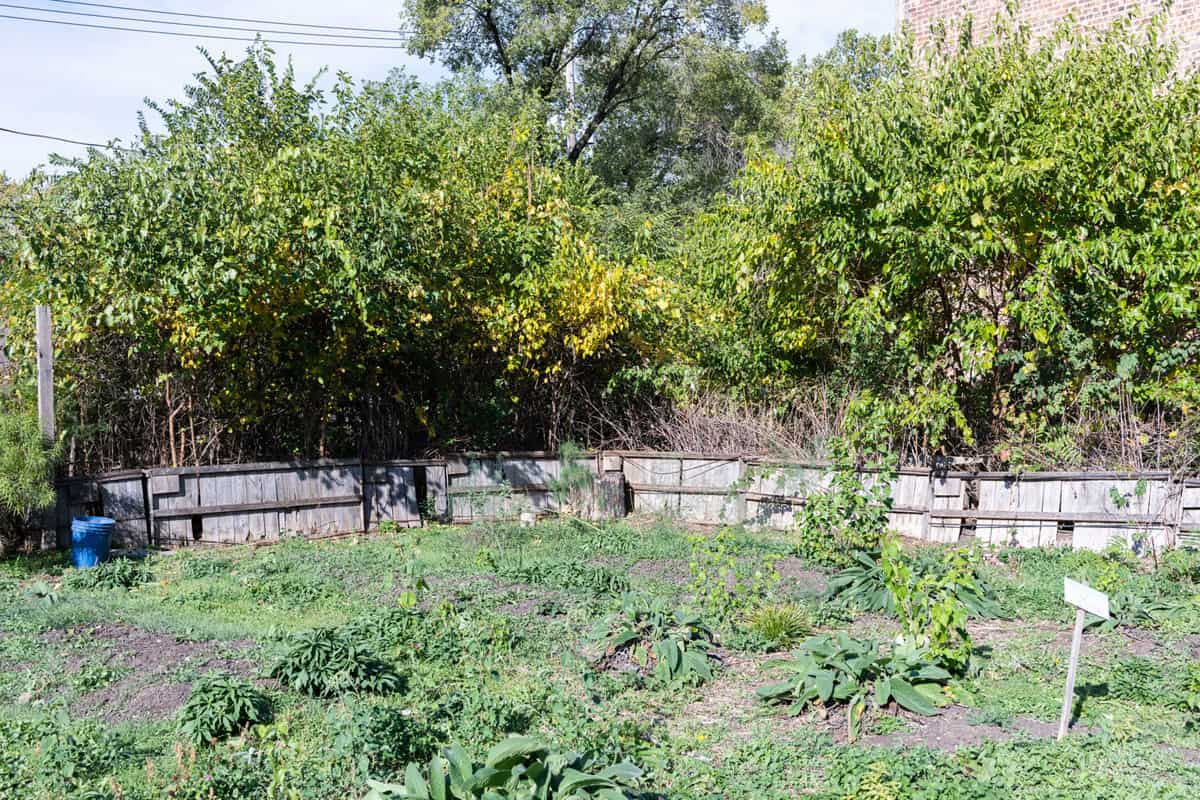
“Platforms such as the Biennial offer a unique space for exploring and experimentingwith new ideas and projects,” shared David Brown, “Since 2015, collaborations with CAB have helped shape The Available Cityand I look forward to how this next phase of the project will bring new perspectives to my work with community organizations and residents while also broadening the conversation—as amplified by current issues—about the role that collective space can have in cities around the world today.”
Over the course of the first three editions, CAB has supported projects created by more than 350 architects, designers, andartists from over 40 countries considering critical topics through the lens of architecture and design. As a platform designed to highlight and explore innovation in the field, CAB is poised to present a global event that responds to changes in the way we gather, engage, and learn. The fourth edition will imagine new and exciting possibilities for activating spaces throughout the city, expanding access to architecture and design, and engaging new voices.
Speaking for the leadership of the independent, non-profit organization that produces the Biennial, Chairman Jack Guthman stated “The Biennial board recognizes the challenges inherent in planning an event of this scale for a year as unpredictable as 2021. We are neverthelessconfident that the support of the Biennial by the global architecture community and by the city’s civic, cultural and philanthropic communities will foster and sustain our efforts notwithstanding these uncertain times.”
As in past Biennials, the fourth edition will also feature a broad spectrum of local and global partners creating programs and content aligned with The Available City. Chicago’s Department of Cultural Affairs and Special Events (DCASE) will once again serve as the Biennial’s official Presenting Partner.
“DCASE is thrilled to work in partnership with the Chicago Architecture Biennial for the fourth edition. As the City continues to advance the INVEST South/West community improvement initiative that launched in October 2019, webelieve the themes for the 2021 show will equally amplify and highlight the brilliant work taking place throughout our city’s neighborhoods,” states DCASE Commissioner Mark Kelly. “This is a remarkable time in Chicago to work together to highlight local priorities through the support of creative and innovative programming and exhibitions."
CAB has also announced a major collaboration with the Danish Arts Foundation (DAF). The DAF previously partnered with CAB during the 2019 Biennial, promoting amutual exchange between global cities about the role of architecture and design in shaping communities. For the 2021 Biennial, DAF returns to commission a work that responds directly to the themes explored through The Available City. The project will be developed by a Danish artist or artist team working in close collaboration with community-based residents and stakeholders in Chicago.
“We are thrilled to again be collaborating with the Chicago Architecture Biennial to create a project that connects the Danish design community with the people and communities of Chicago,” shared the Danish Arts Foundation. “Through this collaboration we hope to be able to learn from each other and inspire positive change.”
Biennial programs will kick-off on October 27 with a virtual talk featuring MacArthur Fellow and 2019 Biennial contributor landscape and public artist Walter Hood in conversation with David Brown. A schedule of in-person and virtual programming—youth workshops, conversations, and community events—will continue throughout the coming year. Through a new programming model, CAB seeks to engage audiences throughout the process of project development leading up to the opening of the 2021 edition and beyond. Over the coming months, CAB will continue to announce collaborations and initiatives being developed by local and global architects, artists, and designers.
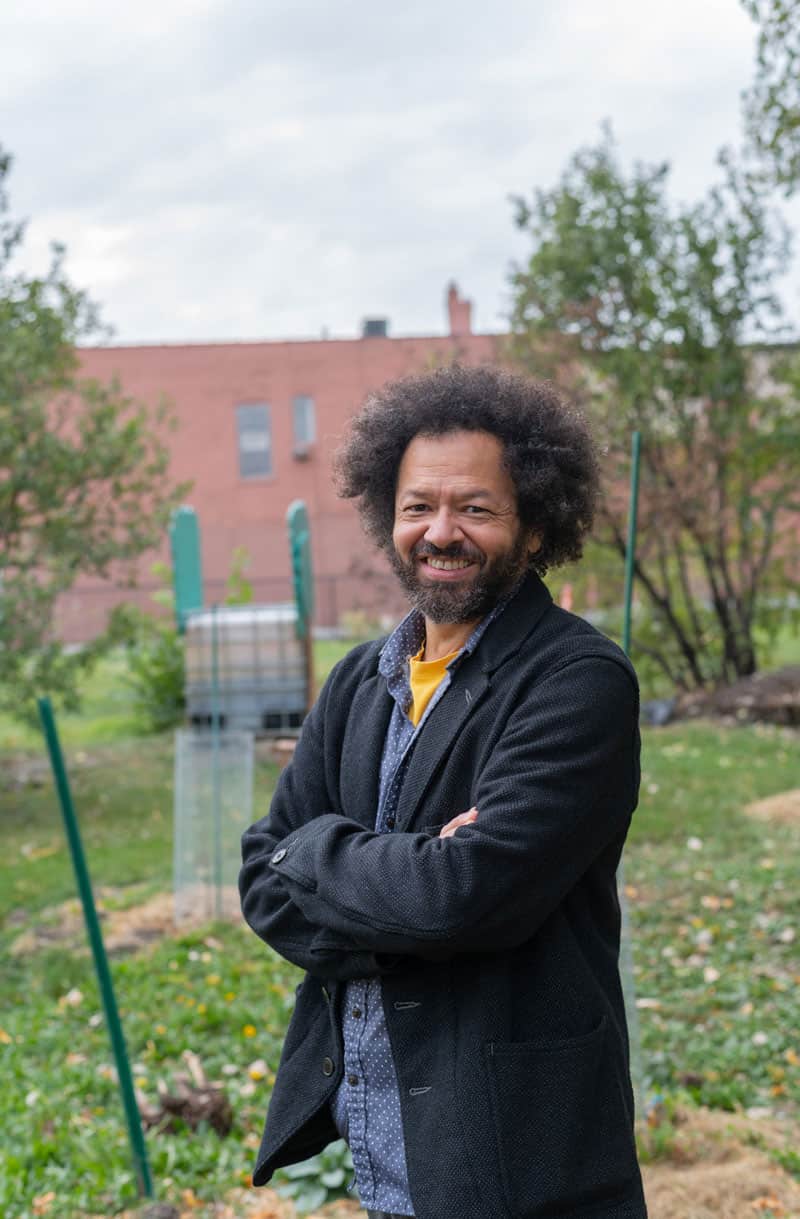
About David Brown, Artistic Director of 2021 Chicago Architecture Biennial
David Brown is a designer, researcher, and educator based at the School of Architecture at the University of Illinois at Chicago. Brown investigates non-hierarchical, flexible, and variable approaches to urban design. Brown’s work has been exhibited in the Venice Architecture Biennale (2012), the Chicago Cultural Center’s Expo 72 (2013), the Chicago Architecture Biennial (2015), and received a grant from the Graham Foundation in 2011. In 2006, Brown curated the exhibition Learning from North Lawndale: Past, Present + Future at the Chicago Architecture Foundation (now the Chicago Architecture Center).
Brown’s writing includes the book Noise Orders: Jazz, Improvisation, and Architecture (University of Minnesota Press, 2006) and essays “Curious Mixtures” in Center 18: Music in Architecture—Architecture in Music (Center for American Architecture and Design, 2014, Michael Benedikt, ed.), “Lots Will Vary in The Available City” in The Oxford Handbook of Critical Improvisation Studies (Oxford University Press, 2016, George Lewis and Ben Piekut, eds.), “The Available City” in the journal MAS Context, and “Futures We Could Have Today” in Flat Out. Brown has lectured on his work at Columbia University’s Center for Jazz Studies and the Politecno di Milano and has taught at Florida A&M University and Rice University.
Danish Arts Foundation Collaboration
The Danish Arts Foundation will support the commission of a new, constructed design project in Chicago as the official Danish contribution to the 2021 edition. The commission will be developed by a Danish artist or artist team working in close collaboration with David Brown along with local residents and partners.
The Danish Arts Foundation (DAF) is Denmark’s largest arts foundation. The DAF works to spread the arts to a wide audience all over Denmark, to promote Danish art internationally, and to pave the way for talented artists. The DAF supports creative thinking and innovative ideas by funding more than 6,000 artists and art projects every year.
Through more than 60 different funding programs, the DAF funds the production and promotion of the visual arts, film, literature, music, performing arts, architecture, crafts, and design—and all that transcends the borders of these art forms. The DAF’s 16 expert committees are responsible for awarding grants to both Danish and foreign art projects, based on the 12,500 applications that they receive every year from artists, institutions, schools, organizations, and companies.

